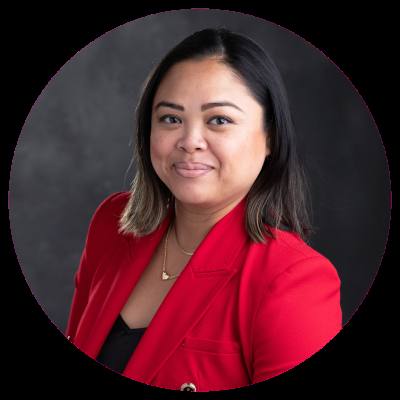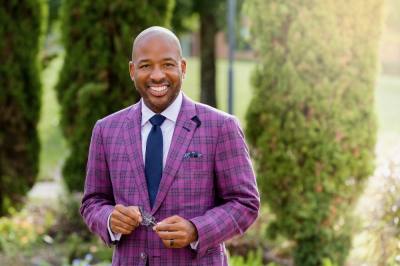Over the past decade, the nation has faced multiple long-term public health emergencies that increased demands for mental health services.
In 2017, the Department of Health and Human Services declared the opioid crisis a public health emergency. Despite mounting efforts to control it, data from the organization paints a picture of an ongoing, continuing crisis.
According to a 2021 national survey on drug use and health, 46.3 million people age 12 and older had a substance use disorder.
Terms to know
Opioids include illegal drugs, such as heroin, and legally prescribed pain relievers such as:- Oxycodone
- Morphine
- Potent, synthetic pain reliever fentanyl
Dr. Daryl Shorter serves as the medical director of addiction services with Menninger Clinic that is based in southwest Houston near the Willowbend area. The clinic provides withdrawal management services and other psychiatric care and treatment to patients. Shorter is slated to present a free, virtual webinar for mental health professionals on substance use disorders Oct. 20.
He spoke with Community Impact to discuss common misconceptions and biases associated with substance use disorders, as well as tips for parents when it comes to talking to their children about substance use. Responses may have been edited for length and clarity.
Describe the current state of affairs when it comes to substance use, in particularly opioids.
I think if people have been paying attention at all, turned on any device of any kind, they would know that we are in the midst of an overdose epidemic, drug overdose death, sort of epidemic. It’s a really complicated phenomenon to behold. Why? Because while it is being largely driven by opioids, I don’t want to minimize the contribution of other types of substances to the overdose epidemic as we see it today.
We have also observed increases in stimulant-related overdose deaths, or benzodiazepine-related overdose deaths.
Some researchers and scholars in the addictions fields or fields of addiction treatment have really begun to characterize what it is that we are seeing currently as a polysubstance overdose death epidemic where people are not necessarily perishing from the presence of a single substance in their system at the time of death, but rather the presence of multiple substances in the system at the time of death.
Yes, these overdose deaths seems to be driven largely and primarily by the presence of opioids, but I think that it’s important for our communities to know and understand that opioids are not the only substance that might pose a threat or a danger or a risk to our communities because these other substances are contributing factors in many cases.
How is the illegal drug supply impacting the situation?
These are pills that resemble the medications that you might get from a doctor that are being manufactured by these large illicit drug manufacturers. So what we have seen is that in this illicit drug supply, there is an addition of things in that drug supply that one wouldn’t necessarily expect.
For example, we are seeing more fentanyl in these substances. It’s certainly much harder to tell now that you are getting what you think you are getting, that you are buying what you think you are buying because that drug supply has been so compromised.
It’s one of the reasons that when we talk about prevention and prevention efforts, we really try to focus on how helpful it would be to persons who use substances. Persons who use drugs, to have access to drug testing kits, where they can actually test their drugs ahead of time to see that they are actually using what they think they're using.
That's a harm reduction strategy. That is, as you can probably imagine, quite controversial, and it explains why even in the state of Texas, fentanyl test strips are illegal.
What are some tips for parents in case they need to have this discussion with their child?
1. Spend time with your children. It’s okay to know where your children are because that gives you an opportunity to observe their behavior.
2. Not everything is a red flag.
3. Look at themselves and their use of substances. Do you have easy access to them in your house? Are you counting the pills in your house?
4. If you create a permissible environment at home, clarify what use is not okay.
5. Ask questions. It’s okay to parent your child. Trust, but verify. But have checks and balances.
6. You should know your children’s friends. Know your children’s friends' parents.
7. Follow-up with your children.
8. If you suspect something, ask.
9. Challenge the status quo. Don’t let how they perform in school distract you from a possible relationship with substances. Don’t assume a child is okay.
10. Work with your child in terms of building skills on how to say no, assertiveness skills. How can you teach your kid to say no to substances? It goes back to knowing your kid. Work with your children, but also let them know that if they’re in a scenario, they can use you as a safety net.
Access to Narcan, which can help treat narcotic overdoses in emergency situations, is becoming more available. Texas school districts and police departments are able to distribute it now. Are there any concerns there?
That is ultimately a good thing. The other piece of it though, I think that we have to contend with, is are we training people how to use them? So it's not just about dispensing them; it’s also about training. Training people on how to recognize when an overdose is taking place. Also training people how to use the medication if necessary and telling people that, especially in cases where fentanyl may be involved, that you might have to give more than one dose.
People still need follow up care after that. This would be a scenario where yes, you do want to go to the emergency room. You do want to go to urgent care to be continually assessed. Young people [should] know that if they do choose to go for emergency services, that's not illegal, that they're not going to be arrested or charged for that.






